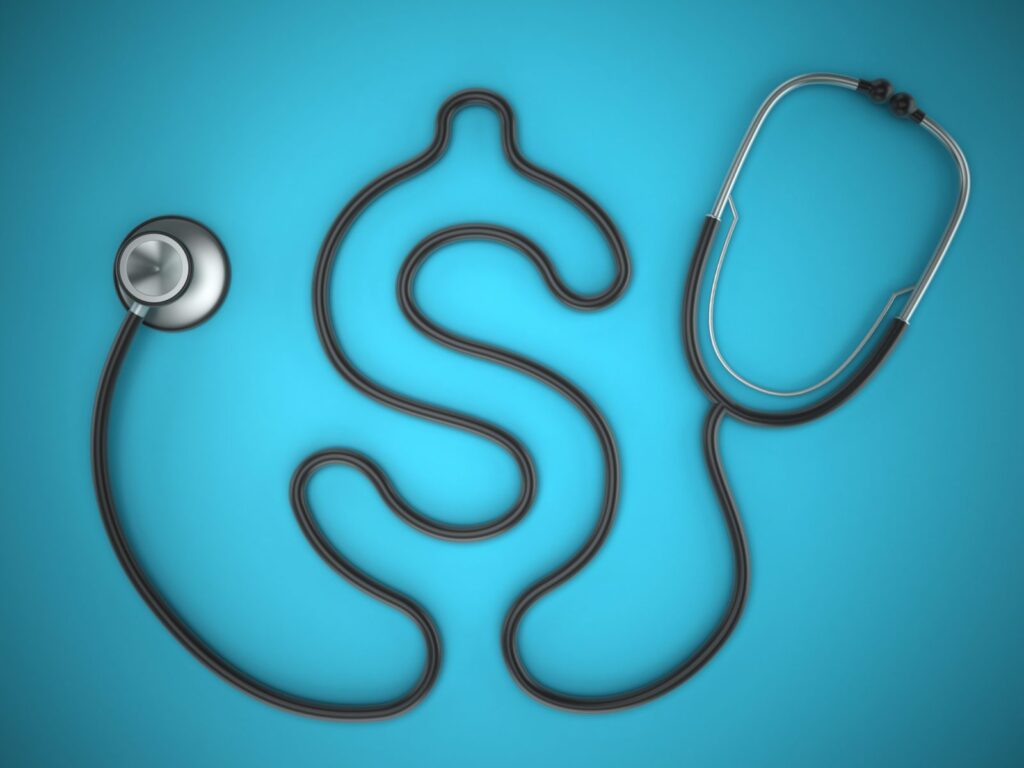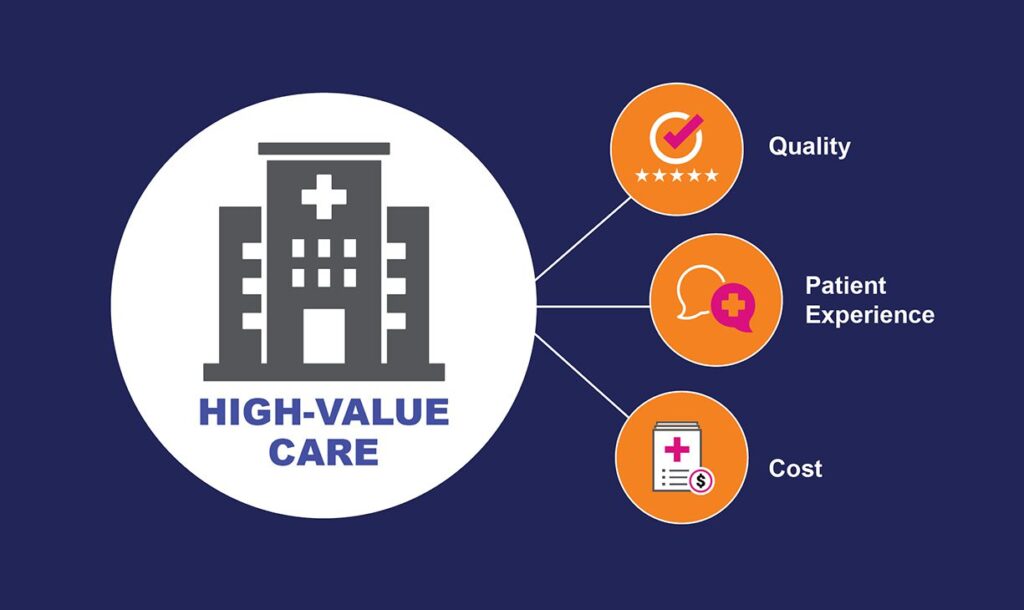
Inflated prices for household products, food and utilities can stretch already thin budgets, leaving many Americans wondering how to pay bills and causing what may amount to be a healthcare cost crisis.
By Jane Sarasohn-Kahn, MA, MHSA
In November 2021, inflation surged by 6.8%—putting it at a 39-year high. Food prices (for food consumed at home) rose 6.5% in December 2021. Eggs, fish, meat and poultry prices grew the most at 12.5%, according to the U.S. Department of Labor Statistics. Food prices are expected to rise by 5% in the first half of 2022, according to retail analyst IRI.
Bankrate’s December (2021) Financial Security Index found that two-thirds of U.S. consumers don’t expect their financial situation to improve in 2022—and many cite the rising inflation rate as one of the barriers to a more positive money situation. People are paying more for everything—groceries, gas, utilities and housing.
Inflated prices for household products, food and utilities can stretch already thin budgets, leaving many Americans wondering how to pay bills—including their medical expenses. The PAN Foundation, an organization that helps underinsured individuals with chronic or life-threatening illnesses get the medications and treatments they need, discovered that 72% of patients find it hard to pay for their basic needs, such as food, housing, transportation, heating—and visits to the doctor.
72% of patients find it hard to pay for their basic needs
The Healthcare Cost Crisis
During the fourth quarter of 2021, nearly 1 in 3 Americans (30%) skipped needed medical care, as noted by the West Health-Gallup 2021 Healthcare in America Report. This was the highest number of people self-rationing care because of cost concerns since the start of the COVID-19 pandemic, growing three times the rate from March 2021.
Worries about healthcare costs led to more than half of consumers telling West Health and Gallup that the high cost of healthcare contributed to the stress of daily life. In fact, 42% of U.S. adults said they were concerned they would be unable to pay for needed healthcare services in the next year.
Furthermore, 2 in 5 people in the U.S. would struggle to pay more than $499 for a sudden health emergency, according to the survey the PAN Foundation conducted with Morning Consult.
42% of adults said they were concerned they would be unable to pay for needed healthcare services
“From rapidly rising inflation, to deferred care pushed into 2021, to more people having to pay for COVID-19 care itself, the U.S. healthcare cost crisis is now coming to a head,” said Dan Witters, a senior researcher for Gallup.
Although high medical costs disproportionately impact uninsured people, people of color and those earning lower incomes, even individuals with health insurance and higher incomes are not immune to the burden of healthcare costs, according to the Kaiser Family Foundation’s (KFF) Health Tracking Poll.
In households with annual incomes totaling more than $120,000, 1 in 5 said that cost was the reason for not seeking needed healthcare services, the West Health-Gallup study found. Half of insured adults said they had difficulty affording out-of-pocket costs—and 1 in 4 insured individuals had challenges affording their deductible, KFF learned.
Furthermore, more people managing chronic health conditions report negative impacts due to problems paying medical bills, the KFF poll found. The poll showed that 30% of people with chronic conditions had trouble paying medical bills compared with 18% of people not facing a chronic condition.
Download our whitepaper: “A Practical Roadmap to Addressing Social Determinants of Health” here.
A striking statistic was found by Morning Consult in their December 2021 study with the PAN Foundation. Three in five people with cancer and those with a chronic condition were concerned at least once a week about feeding themselves and/or their family.
The Cost of Prescription Medicine
One specific healthcare product that 1 in 3 health consumers are concerned about affording is prescription drugs, according to the West Health-Gallup survey. Many Americans expect the cost of prescription drugs to increase in the next year. And it’s important to note that more than 90% of Democrats, Independents and Republicans agree that the cost of medicines in America is higher than it should be.
Exorbitant costs have led to 1 in 5 people reporting skipping a prescribed medicine to save money in the past year, West Health-Gallup ascertained. That percentage grows in proportion to the number of prescriptions in the household (which may, in part, contribute to households dealing with a chronic condition feeling more acute stress about healthcare costs).
The affordability of drug costs for patients enrolled in Medicare who are dealing with multiple chronic conditions is a particular pain point for older people. For those with multiple chronic conditions, cost barriers can lead to cost-related medication nonadherence, a new commentary in JAMA Internal Medicine noted. Even with Medicare Part D covering the bulk of drug costs for seniors in America, there remain many patients who face affordability challenges and problems covering their personal donut holes.
For older people on fixed incomes, inflation can eat into household budgets, especially for patients prescribed multiple medicines for multiple chronic conditions and those who may be prescribed a brand-name drug fetching a higher retail price than a generic.
Eliminating “Surprise” Billing
The discussion about Americans dealing with healthcare costs in an inflationary economy is set in the context of the No Surprises Act and the larger Consolidated Appropriations Act passed in December 2020 and in effect since January 1, 2022.
In an article published by Foley & Lardner, the authors explained that the “spirit” of the No Surprises Act addresses educating consumers, requiring medical cost transparency and fee disclosures, and eliminating balance billing and “surprise” bills sent from providers to patients. Practically and very generally put, the Act makes it illegal for healthcare providers to bill patients for more than the in-network cost-sharing amount specified in the patient’s health insurance plan.
“Pricing transparency regulation got off to a rocky start in 2021,” observed the Health Evolution blog. That leaves many people wondering if 2022 will be any better.
For example, only 1 in 4 hospitals reported all required data elements in machine-readable format, based on an analysis from the University of Minnesota School of Public Health. While 7 in 10 hospitals reported data in a consumer-friendly format such as a price estimator tool, the usability varied by type of hospital (e.g., non-profit vs. public vs. for-profit).
Another study published in Health Affairs found that 65 of the top 100 hospitals in the U.S. were noncompliant with the No Surprises Act, resulting in the Centers for Medicare and Medicaid Services contacting more than 250 hospitals to issue a warning.
In the meantime, out-of-network bills and medical bankruptcy continue to capture mainstream news media attention, such as Newsweek discussing COVID-19 related OON bills and bankruptcy. A New York Times story covered surprise medical bills costing Americans millions—and “Congress finally banned most of them.”
Even with the national No Surprises Act being slowly implemented by U.S. hospitals and health systems, some states have begun to promulgate consumer protections against medical debt. Some 21 states have passed laws to protect patients from medical debt, a JAMA viewpoint published this month noted, recognizing that the No Surprises Act “still leaves many medical bills subject to collection.” Notably, the authors recognize that these state-level protections could also help advance racial and ethnic equity because, “Black and Hispanic populations are at greater risk of incurring medical debt and legal judgments from collections due to lower levels of insurance or wealth to pay these [medical] bills.”
A column in Forbes called medical bankruptcy “a new chronic condition for millions.” Furthermore, TransUnion calculated that as of November 2021, 1 in 3 Americans were deferring medical care because they already had existing unpaid medical bills.
Can ‘Buy Now, Pay Later’ Help Close the Gap?
This month, Deion Sanders, member of the Football Hall of Fame, began collaborating with Aflac on the Close the Gap initiative to address the health/wealth gap in the U.S.—with a pillar devoted to medical debt.
The concept of “buy now, pay later” (BNPL) has received traction from many categories of consumer goods, including technology, furniture and home goods, and clothing. Some of the most popular BNPL services include Afterpay, Paypal Pay in 4, Klarna and Affirm. BNPL may come to healthcare, given consumers’ concerns about and challenges with paying off medical costs.
Some 16% of U.S. consumers told Momentive they would consider healthcare as a product for which they would buy now and pay later (increasing to 21% of consumers who have already used BNPL for other kinds of products or services). More women would be keen to use BNPL for healthcare than men (19% versus 13%, respectively).
In 2022, patients will face growing healthcare costs during household inflation the likes of which Americans haven’t seen in many years. This year will create novel challenges and opportunities for healthcare providers, health systems, health plans and pharma companies to bring fresh, creative approaches to transparency, value and patient support services that enable people to live their healthiest lives—both physically and fiscally.



About The Author: Jane Sarasohn-Kahn, MA, MHSA
Through the lens of a health economist, Jane defines health broadly, working with organizations at the intersection of consumers, technology, health and healthcare. For over two decades, Jane has advised every industry that touches health including providers, payers, technology, pharmaceutical and life science, consumer goods, food, foundations and public sector.
More posts by Jane Sarasohn-Kahn, MA, MHSA